Objective:
- Analyse the relative importance of key demand-side mitigation strategies, examining specifically the areas of buildings and transport, including personal mobility and freight transport
Case:
Methodology:
- IAM: COFFEE, IMACLIM, IMAGE, MESSAGE, PRO-METHEUS, REMIND and WITCH
- Shapley/Sun decomposition method
Data Source
Findings:
- In the default current policy scenario, direct CO2 emissions from buildings increase by -1% to 36% in 2030 and -8% to 31% in 2050, compared with 2050 levels, whereas direct emissions from transport increase by 5% to 32% in 2030 and -10% to 49% in 2050
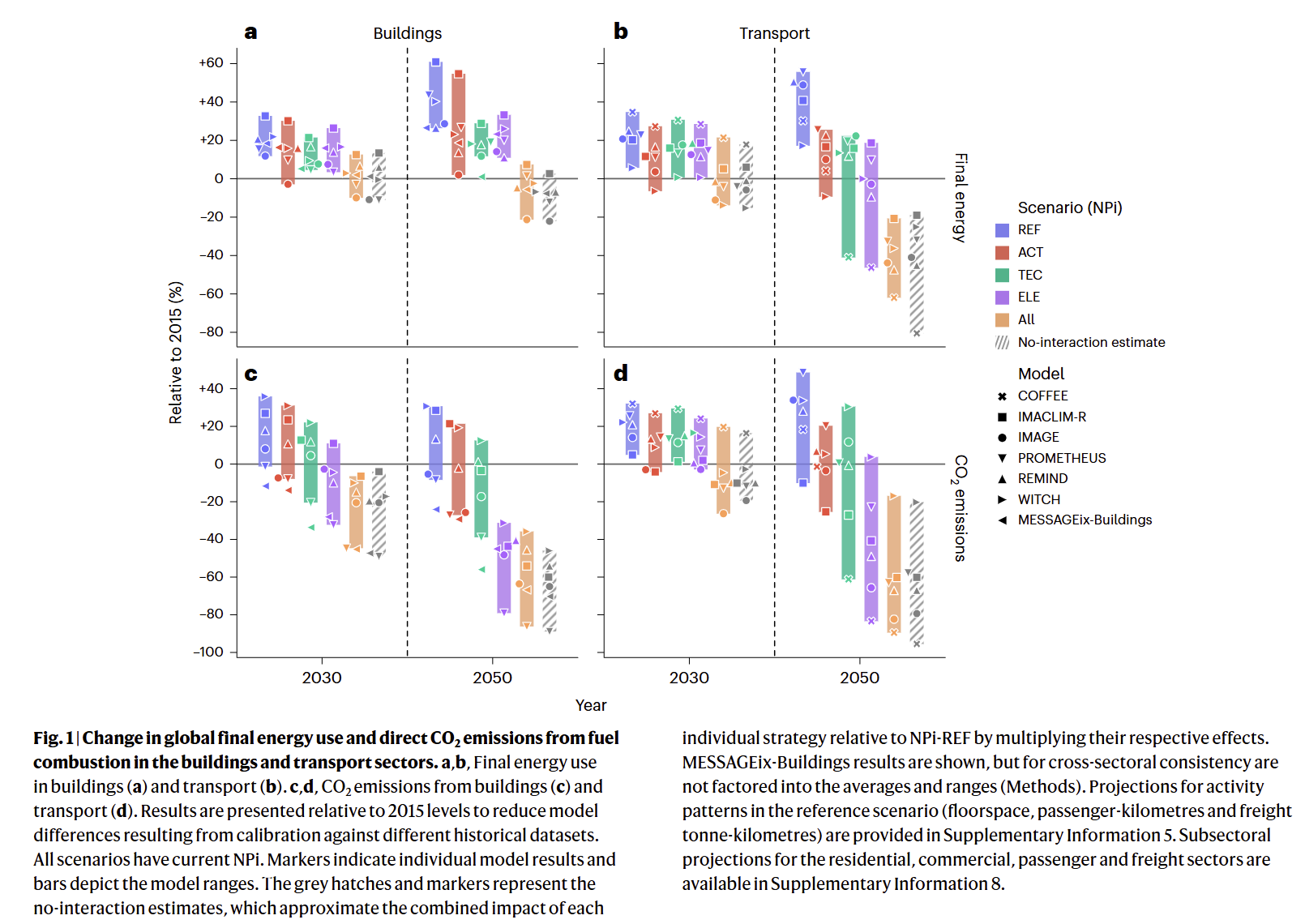
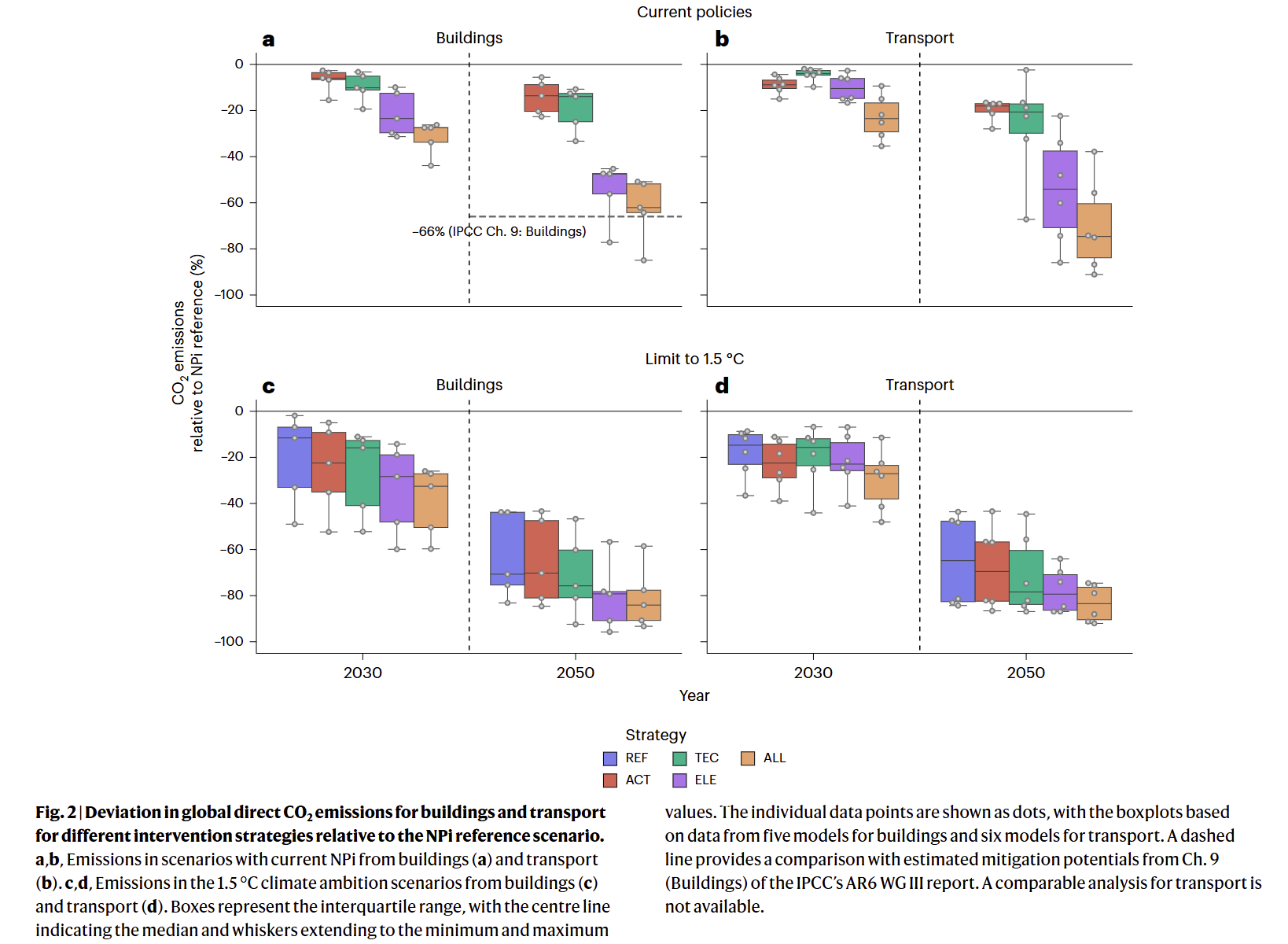
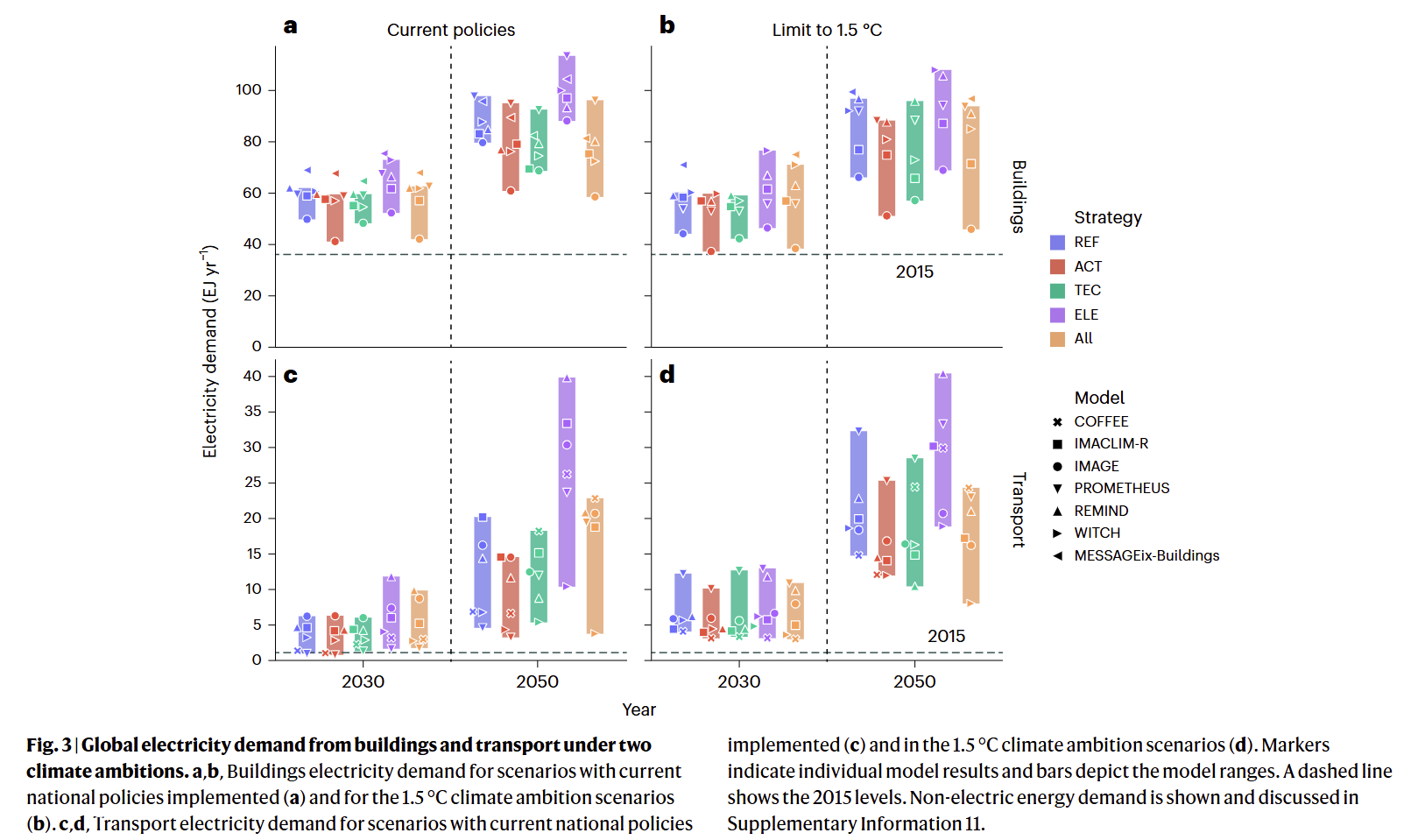
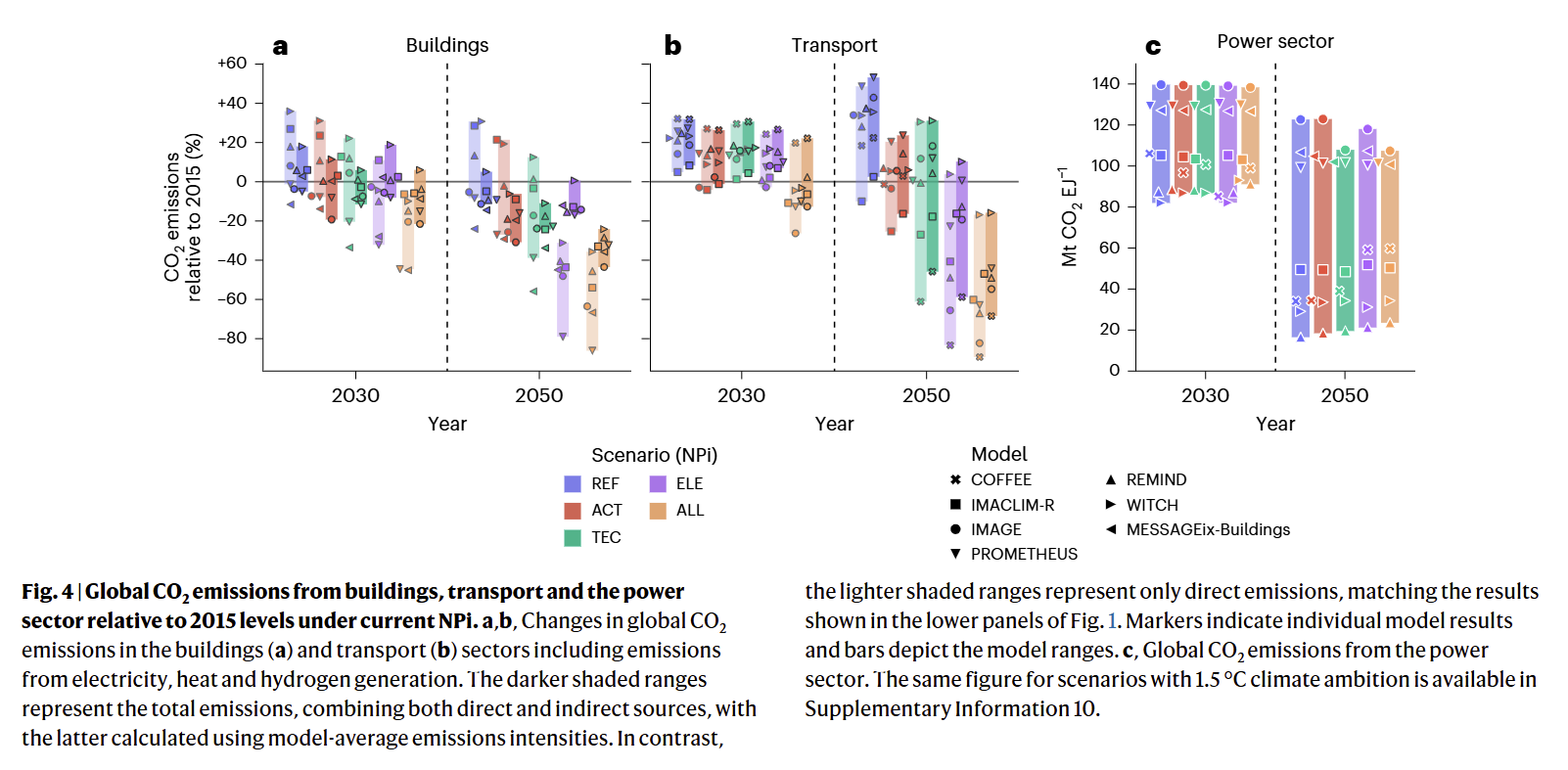

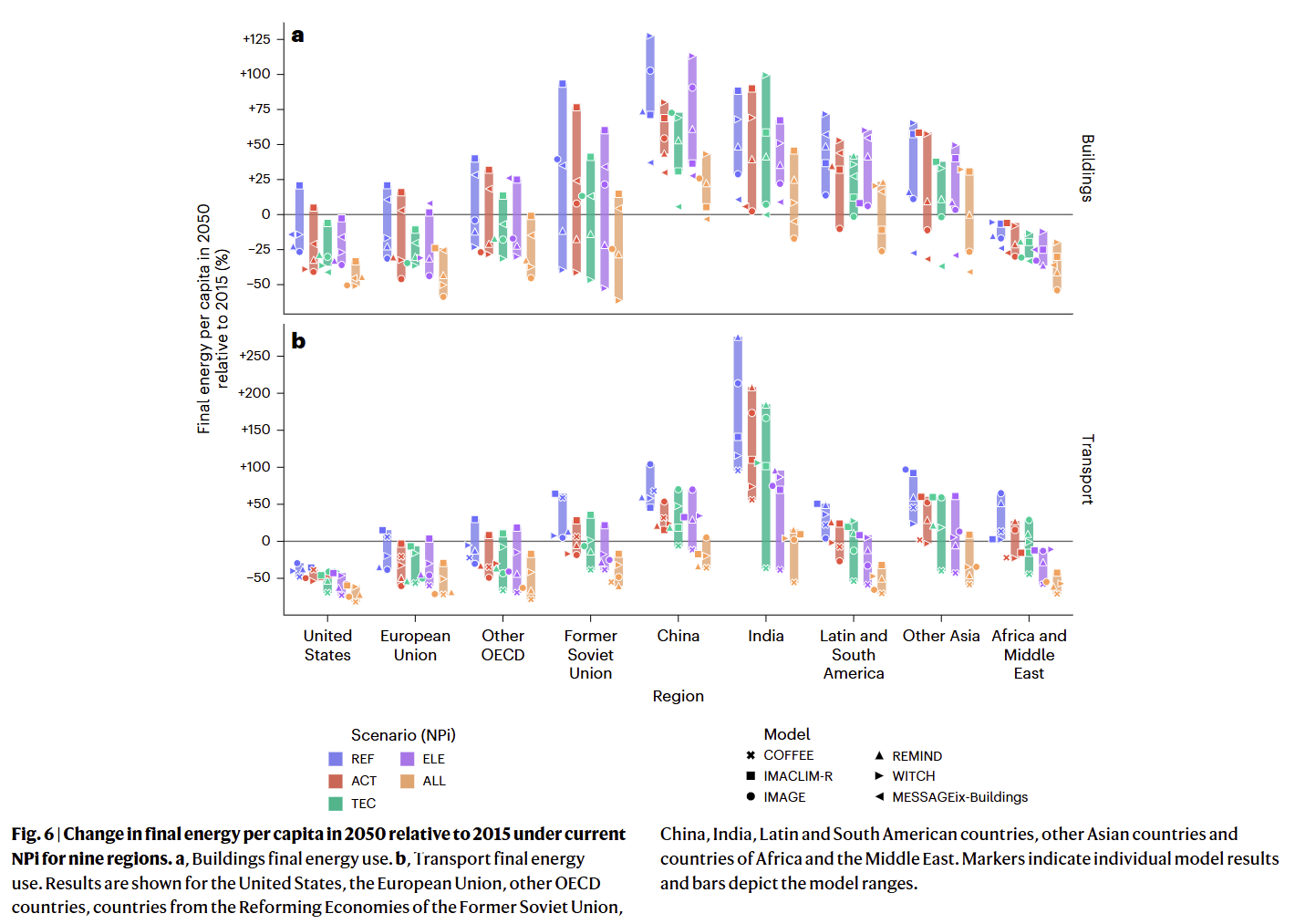
Coding Reference:






